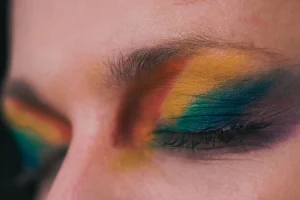
Why BDSM is Healing
Why Bdsm Is healing? Let`s find out
Why BDSM is Healing: Let’s Explore
BDSM is often misunderstood, but at its core, it is deeply healing. It transcends the physical and can feel like a spiritual experience—one that touches both the submissive and the dominant in profound ways.
In a world where kink is still widely misunderstood, there’s a pervasive stigma that continues to cast a shadow over BDSM. This stigma not only undermines the joy and healing it can bring but also reinforces harmful misconceptions about its practitioners.
One of the most troubling things I’ve encountered is the pathologizing of sexual masochism, where it is wrongly classified as a mental disorder. These labels, often reinforced by popular misconceptions and outdated clinical views, only deepen the sense of shame for those who seek BDSM as a means of connection, growth, and healing.
I’ve heard these questions countless times, and I know many of you have, too. Let’s break down some of these misconceptions:
- “Are my submissive desires a sign that something is wrong with me?”
- “Does wanting to surrender control mean I’m not a real man?”
- “Is there something psychologically wrong with women who embrace dominance? Does it trace back to some childhood trauma?”
- “If I’m submissive, does that mean I’ve been sexually abused or that I’m trying to relive that abuse?”
- “Are we all just trying to work through childhood wounds that were never properly addressed?”
These questions stir up deep fears: Are we broken? Is there something inherently wrong with us? Are we just acting out unresolved traumas from our formative years? The assumption that BDSM is a result of dysfunction—an unconscious attempt to replay unresolved childhood experiences—permeates much of the conversation around kink.
But where is this perspective coming from? And more importantly, how do experts in both the BDSM community and clinical psychology view this?
The truth is that clinical psychology has not yet fully caught up with the evolving understanding of kink and BDSM. As someone who has lived and breathed this world for years, I believe the conversation needs to shift. Experts within clinical psychology need to be better educated about kink—what it truly is, how it functions, and why it’s not a pathology but a legitimate form of sexual expression and connection.
From my own experience and the experiences of many others, BDSM is not about dysfunction; it’s about empowerment. It is not a symptom of something broken—it’s an affirmation of autonomy, a way to explore trust, vulnerability, and healing in a consensual and sacred space.
In reality, BDSM can provide profound healing because it offers us the space to fully embrace our desires, explore our boundaries, and understand our sexuality without shame. The rituals and roles within BDSM allow individuals to reclaim control over their bodies and desires, finding balance and connection in ways that can be deeply cathartic and transformative.
It’s time for the narrative to change. BDSM is not a symptom of something wrong—it’s a path to healing, growth, and self-discovery. It’s time to embrace it for what it truly is: a powerful tool for emotional and sexual well-being.
The Misrepresentation of BDSM in Popular Culture: A Closer Look at Fifty Shades of Grey
When we look at how BDSM is portrayed in mainstream media, Fifty Shades of Grey often comes up. For many of us in the BDSM community, the film is a source of frustration—not because of the concept itself, but because it misrepresents the very essence of what BDSM is. The truth is, the movie wasn’t written by someone with lived experience in the lifestyle; rather, it was created by an author writing from her own fantasies, which, while valid, didn’t accurately reflect the dynamics or spirit of BDSM.
One of the most troubling moments in the film occurs when Christian Grey, the dominant character, explains his need for control. He says, “Because I’m fifty shades of fucked up.” This statement, in one sentence, distorts the core of what BDSM is about and reinforces harmful stereotypes. It suggests that being involved in BDSM is a sign of being “broken” or “damaged.”
The unfortunate reality is that this kind of narrative does real harm. It deepens the stigma that already surrounds BDSM, portraying it as a result of psychological issues or trauma. This portrayal feeds into the misconception that if you’re into kink, you must be “messed up” in some way. It implies that BDSM is a symptom of something inherently wrong—whether it’s abuse, psychological damage, or an unresolved past.
But here’s the truth: BDSM isn’t about being “messed up.” It’s not about fixing broken people or playing out childhood traumas. BDSM is about empowerment, trust, communication, and exploration. It’s a consensual exchange between partners who seek to connect on a deeper level, to experience vulnerability, and to explore aspects of their desires that may not be as accessible in traditional relationships.
Rather than reinforcing this harmful narrative, it’s crucial that we educate others on the fact that BDSM is a valid and healthy expression of sexuality. It’s not about dysfunction—it’s about choice, agency, and connection.
So while Fifty Shades of Grey may have sparked curiosity for many, it’s important for those of us who truly understand the lifestyle to reshape the conversation. BDSM is not about being “fucked up.” It’s about being free to explore your desires in a safe, consensual, and empowering way.
You are kinky because you’re beautiful.
You’re kinky because it’s natural.
It is called kink sexuality.
The term Kink sexuality is another, sexual orientation, just like homosexuality, heterosexuality it’s a it’s a true sexual orientation.
Kink sexuality is, that you’re kinky because you’re wired this way and that is the beauty of it.
You came out this way, with your desires or fantasies,
And then whenever you discover them, you can discover that you have desires, kinky fantasies, or you’re turned on by things that are kinky in childhood or adolescence, you might not even discover them early age., but many people don’t explore it, or step into exploring and until they’re in their 40s 50s 60s.
Kink Sexuality: Embracing the Spectrum of Desire
Kink sexuality isn’t something separate or confined to a specific group—it’s a part of who we all are. In my view, every person has a unique level of kink within them. For some, it might be something subtle, like the fantasy of being gently pushed onto the bed, a simple act that hints at dominance. And even that—just that small moment—can be an expression of power dynamics.
I don’t believe vanilla sex exists without some level of dominance and submission. Even in what’s considered “normal” or “vanilla” sex, there’s still an underlying exchange of power. Whether it’s who leads the way, who takes charge, or who surrenders control, there’s always an element of DS—dominance and submission—whether we recognize it or not.
This is why I truly believe that everyone has a kink, to some degree. It’s just that it exists on a spectrum. On one end, we have what’s traditionally viewed as vanilla sex: missionary, intercourse—what most consider “normal.” On the other end of the spectrum, we have a deeper, more intense engagement with kink, where traditional sexual acts are only satisfying if they incorporate elements of BDSM or other kinks.
And here’s the key takeaway: it’s all fluid. It’s not about labeling yourself as strictly vanilla or strictly kinky. You can fall anywhere along this spectrum. You can crave kinky experiences and still enjoy the intimacy of vanilla sex. There’s no right or wrong way to experience sexuality.
The idea that there’s a “normal” way to have sex—defined by rigid rules like missionary or anything else in the DSM (Diagnostic and Statistical Manual of Mental Disorders)—is a limited and damaging concept. It implies that if your desires don’t fit into this narrow box, you’re somehow broken or pathological. This simply isn’t true.
Sexuality, like so much of life, exists on a spectrum. It’s not black and white. We all fall somewhere in between. And what matters most is not where you fall on that spectrum, but how you honor your own desires and authenticity.
Ask yourself this: Where do I fall on the spectrum of my desires? What feels true and right for me? How can I embrace and express that truth, consistently, without shame?
Because when you can answer these questions with honesty and self-awareness, that’s when you begin to find your deepest happiness and fulfillment. It’s not about conforming to someone else’s expectations—it’s about discovering what lights you up, what feels authentic, and allowing yourself the space to express your truest desires, whether they’re light or dark. That’s where the deepest connection and nourishment of your soul lies.
Embrace your desires. Embrace the spectrum of your sexuality. When you do, you’ll find the happiness and peace that comes from truly being in alignment with your most authentic self.
Exploring the Line Between Healthy and Unhealthy Kink Expressions
Lately, a few important questions have surfaced, and I feel it’s crucial to address them openly.
One of the most common questions in the kink community revolves around where we fall on the spectrum of sexual expression. Are we on the “vanilla” side, the “kinky” side, or somewhere in between? This question is often layered with deeper concerns: Are my desires healthy? Are they rooted in something unresolved or traumatic? How do we draw the line between healthy, consensual BDSM practices and potentially re-traumatizing experiences?
To explore this, I want to dive into something called psychodrama—a powerful therapeutic technique that can illuminate the healing potential of BDSM. Psychodrama involves role-playing, where a therapist and client reenact a past traumatic event, but with a transformative twist.
Imagine a client telling their therapist about a painful conversation with their mother, one that left them feeling worthless. The client replays the conversation with the therapist acting as the mother. But this time, instead of hearing the mother’s hurtful words, the therapist, in the role of the mother, says something healing: “I’m sorry. I’ve failed to see you for who you truly are. I love you, and I accept you as you are.”
This simple shift—saying healing words—can have a profound impact on the psyche. It allows the client to process and reframe the trauma, offering a chance for healing and emotional growth. Psychodrama doesn’t just happen in therapy; there are tools like “inner child work” and the empty chair technique, where a person can play both roles (themselves and the person they’re having conflict with) to transform their experience on their own.
Now, how does this relate to BDSM? When people ask whether kink is a product of unresolved trauma, or if playing out certain fantasies could be re-enforcing negative patterns, the concept of psychodrama offers valuable insight. The question is: Do we risk re-traumatizing ourselves by engaging in certain kinks? Can our fantasies push us backward, rather than forward in our healing?
Here’s the thing: The answer isn’t always black and white. Kink can be healing, but it requires careful consideration, intentionality, and, above all, consent. BDSM, when practiced within a safe, consensual, and nurturing environment, can serve as a form of psychodrama.
For instance, imagine someone who has experienced sexual trauma, such as rape. They may have fantasies about reenacting this trauma in a BDSM scene with their dominant partner. The key here is the safe container—the trust, care, and understanding that exists between the partners. The dominant partner plays an important role, not just in fulfilling the fantasy, but in creating an environment where the submissive feels safe to explore and process their desires.
This is where the therapeutic element of BDSM comes in. After the intense scene is over, the process of aftercare becomes essential. Aftercare is the nurturing, emotional support that the submissive receives, often through physical touch, comforting words, and reassurance. This care is what allows the psyche to heal, just like the healing words in psychodrama. The traumatic event is reframed in a way that feels empowering, not painful.
For example, imagine that after a scene, the dominant partner says something like, “That was amazing, I’m so proud of you. I’m here for you, I love you, and I support you.” These words of affirmation are part of the healing process, reinforcing the idea that the submissive is worthy of love and care, even after experiencing something intense.
In this way, BDSM can serve as a form of self-healing—giving people the opportunity to reclaim their power, rewrite their trauma, and move forward in their emotional and sexual lives.
However, it’s also important to note that not every experience with BDSM is automatically healing. For some, without the right aftercare or emotional support, kink can be triggering or harmful. The dominant partner has a responsibility to ensure the scene is safe, consensual, and ends with proper care. This is where the experience can shift from being therapeutic to potentially re-traumatizing.
So, how do we know if our kink is healthy or unhealthy? The key lies in the relationship with ourselves and our partners. The foundation of any healthy BDSM relationship is trust, communication, and consent. It’s about checking in with ourselves: Am I engaging in this play because it genuinely empowers me and helps me process my emotions, or am I doing it out of a need to escape or re-live trauma without resolution?
There’s no one-size-fits-all answer, and no set line that universally divides healthy from unhealthy BDSM. But what we can control is how we approach it—with awareness, respect for our boundaries, and a commitment to healing.
Remember, BDSM is not inherently harmful; it’s how we engage with it and the emotional spaces we create around it that determines its impact. As with psychodrama, it’s about shifting the narrative—creating a space for healing, not harm.
So, the question isn’t just about whether kink is rooted in trauma—it’s about how we navigate our desires in a way that respects our personal growth and healing.
Why BDSM Is Healing: The Power of Safe, Consensual Exploration
BDSM isn’t just about kink or erotic power exchange. For many, it’s a deeply transformative experience, capable of healing old wounds, helping to reclaim lost parts of the self, and providing a safe space to explore desires without shame or guilt. Let’s explore why BDSM can be incredibly healing when practiced with respect, consent, and care.
Healing Through Kink: A Story of Empowerment
Imagine a woman who has experienced physical abuse in her past, someone who’s been through traumatic events that have left emotional scars. She carries with her a series of complicated feelings, both about herself and about intimacy. For many people in her situation, reconciling those painful experiences can feel impossible. But what if, in the right environment, with the right people, she could use kink as a form of healing?
Suppose this woman has a particular fantasy — let’s say it’s a rape fantasy, one that might seem extreme to some but is deeply personal and rooted in her emotional history. She decides to explore this fantasy with her Dominant (DOM), a person she trusts, who is not only skilled but also nurturing and accepting. The scene is built around her, orchestrated with her boundaries in mind, allowing her to fully explore this fantasy in a way that feels empowering rather than re-traumatizing.
Now, here’s where the healing power of BDSM comes into play: After the intense scene, the experience doesn’t simply end. That’s when the magic happens — Aftercare.
Aftercare is a sacred, essential part of any BDSM scene. It’s the time for emotional nurturing, where the submissive (sub) is held, comforted, and reassured. For this woman, aftercare would involve being held close, supported as she may cry or release pent-up emotions, while the Dominant affirms her with words of love and respect: “That was so hot, baby. I’m so honored to have shared that moment with you.”
This may seem simple, but it is deeply powerful. The scene, while intense, is followed by an experience of unconditional love and emotional safety, a powerful contrast to the trauma she has lived through. It’s a reprogramming of sorts — where an experience that may have once been painful becomes one of growth, healing, and empowerment.
In this sense, BDSM allows for psychodrama — the act of re-enacting traumatic experiences with a controlled and safe environment where the narrative is reshaped and reframed in a way that promotes emotional release and healing.
The Submissive Holds the Power
You might wonder: “But doesn’t BDSM inherently involve control? How can someone be ‘healed’ if they are giving up control?” Here’s where BDSM offers something profound: while the submissive is the one who surrenders in the physical scene, it is, in fact, the submissive who has ultimate control.
In any BDSM scene, the submissive holds the power to stop the scene at any moment with a safe word — usually a simple word like “red”. This concept is revolutionary because it places the sub firmly in control of the experience, ensuring that everything remains consensual and that their emotional and physical safety is always prioritized. The submissive has the ability to say “no” at any time, which ensures that their boundaries are respected, and that they remain in control of their journey.
By choosing to engage in a BDSM scene, the sub is actively claiming their desires, taking control of their narrative, and choosing how their fantasy unfolds. For someone with trauma, this process can be incredibly empowering, as it helps them reclaim parts of themselves that may have felt powerless in the past.
The Power of Consent in Healing
Consent is not just a cornerstone of BDSM — it is the foundation of its healing power. Through explicit negotiation and mutual respect, consent helps build a container of safety in which the healing process can take place. In these moments, the submissive’s desires are not only accepted but honored, even when those desires are linked to past trauma or taboo fantasies.
As a Dominant, it’s important to understand the weight of this responsibility. BDSM is not a casual playtime for the unskilled or emotionally unavailable. A true Dominant is someone who can hold space with love, respect, and care for their submissive. A Dominant who is unskilled or disrespectful, who doesn’t know the value of aftercare, can easily cause harm. This is why it’s critical for Dominants to be properly trained in the techniques, skills, and emotional intelligence needed for the safe practice of BDSM.
When done right, BDSM can be a path to healing, confidence, and empowerment. It offers a safe and structured way to process pain, release emotional blockages, and explore desires without judgment.
Exploring Fantasies in a Safe Space
If you’re someone who feels drawn to BDSM or has a partner with kinky desires, know that there’s nothing wrong with wanting to explore these aspects of yourself. Our desires are part of who we are, and understanding them, embracing them, and engaging with them safely is not something to hide from. In fact, as we explore our kinks, we often come to better understand ourselves — emotionally, psychologically, and sexually.
If you’re hesitant about exploring your own desires, it might be because society has conditioned us to believe that anything outside of conventional sexual behavior is wrong or perverted. It’s natural to seek to understand where these desires come from, but often the better question is not why they exist, but rather how we can embrace them in healthy and affirming ways.
In the end, it’s not about finding the “root cause” of your desires — it’s about creating a space where they can be safely expressed. For some, this might be through a supportive partner, while others may find comfort in engaging with a skilled and experienced Dominatrix who can guide them through their fantasies with care.
The Importance of Aftercare
As I mentioned before, aftercare is the cornerstone of healing in BDSM. It is during aftercare that the sub can process the emotional and physical journey they’ve just undergone. In the absence of aftercare, BDSM scenes can leave individuals feeling empty, confused, or re-traumatized, especially if the Dominant doesn’t have the emotional intelligence to support them.
When aftercare is done right, it allows the sub to come back to themselves, to be held, to be affirmed, and to receive emotional nourishment. Aftercare is the nurturing we need after the vulnerability of surrendering to a scene. It’s the moment that completes the healing process.
Final Thoughts
BDSM can be healing, but it requires knowledge, skill, and above all, compassion. It’s not just about pain or power — it’s about connection, trust, and the deep respect that comes with consensual play. If you’re someone who has experienced trauma, exploring your fantasies with a skilled Dominant in a safe, respectful, and nurturing environment can be a transformative healing experience.
Remember: BDSM is not just about the scene — it’s about how you process it, how you feel afterward, and how you honor your desires. Healing doesn’t happen through suppression; it happens through acceptance and integration. By embracing your kinky self, you not only heal but empower yourself, moving beyond shame and into freedom.
Check The Most Complete Course in BDSM
Get your education on Bdsm in the right way! Here~
Thank you for reading, please let me know your thoughts.
You can Join our Community and be the first to receive all the news, announcements, classes, meet-ups, and events.
Tag:BDSM








1 Comment
As brought out by the Goddess, I guess honoring your desires and aftercare is an important aspect of healing.